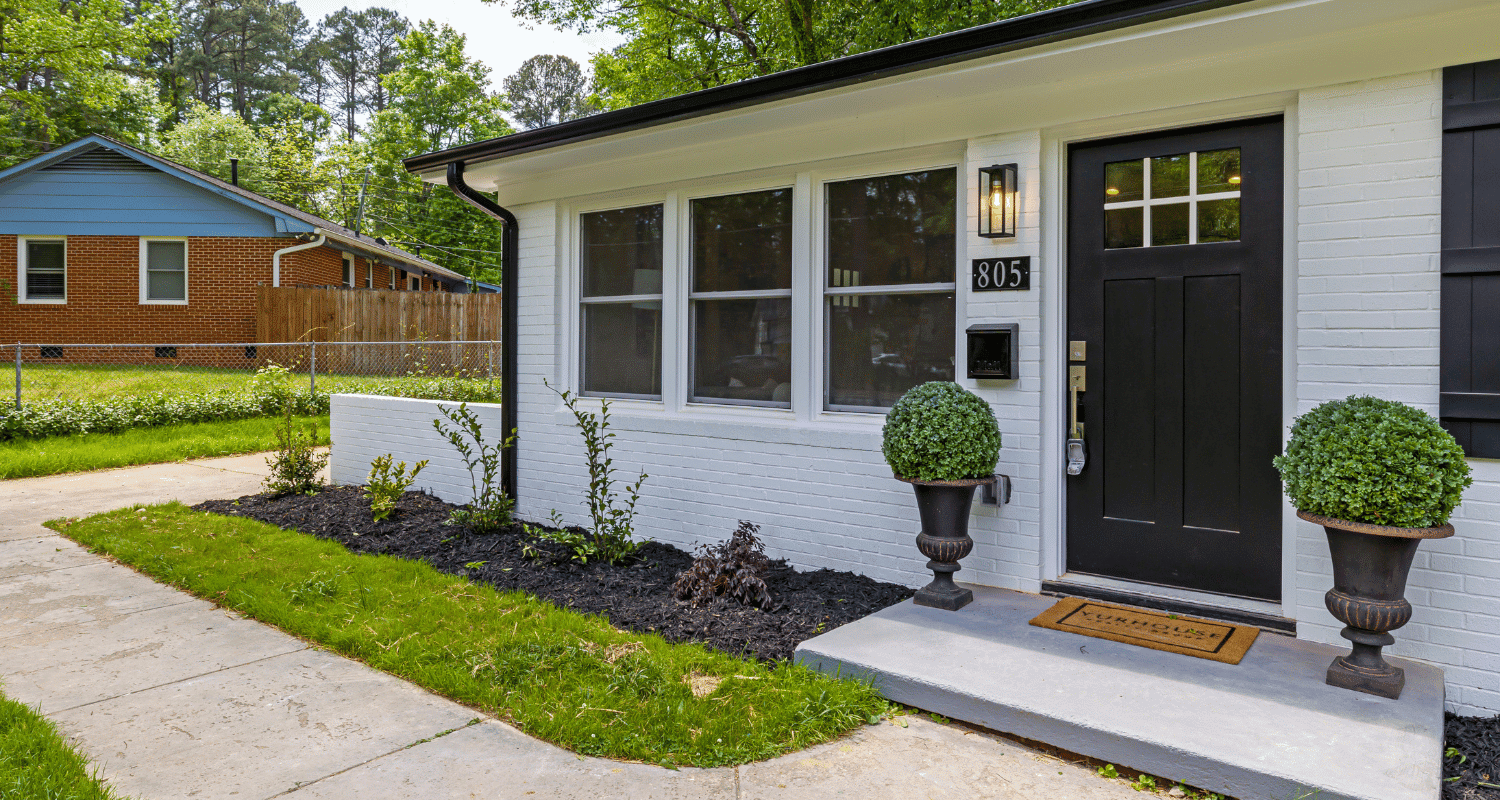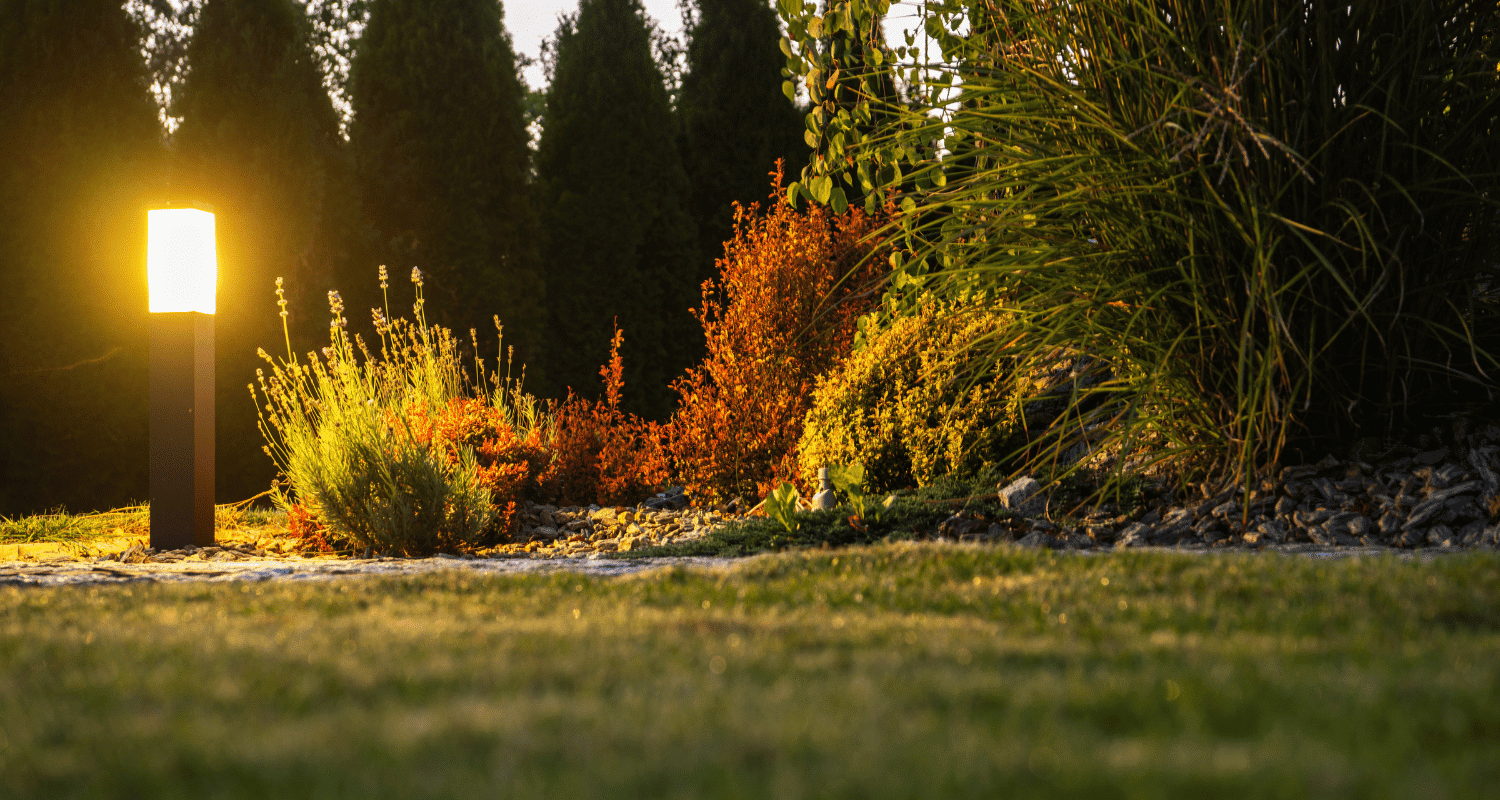It can be challenging to design a beautiful and usable outdoor space on a property…

How to Landscape a Front Yard for Beginners
Making your front yard into a welcoming space isn’t necessarily expensive or complicated. A polished look that adds value and charm to your home can be achieved, even by a first-timer, with a little planning and creativity. Whether you’re looking to increase curb appeal, establish a low-maintenance garden, or take on DIY front yard makeovers, some knowledge of landscape design will get you there. From selecting plants to adding rocks and lighting, the right combination of elements can transform your property.
Designing your yard begins with imagining how you will use it. Which do you like: a yard with lots of greenery and seasonal blossoms, or modern landscaping with minimal plants and clean lines? No matter what style you’re leaning toward, paying attention to balance, proportion, and functionality will help your yard feel cohesive and inviting.
Landscaping the front yard as a beginner requires some planning, appropriate plants, and a balance between decorative elements and practical aspects. Designing your garden for low maintenance may not seem catchy, but a little forethought can help create the perfect yard and cut down on chores.
Understanding the Basics of Front Yard Landscaping
Behind every great landscape design is a plan. Before you start digging or planting, assess your space for sunlight, soil type, and slope. These factors determine what will grow well in your yard and how water will flow through it. Start with a rough sketch of your future garden, marking where the grass, flower beds, paths, and focal points will go.
As a beginner, it’s smartest to start small. Work your way around your yard one area at a time, like the space next to your walkway or porch. Dividing your project into stages makes it easier to stay on budget and motivated.
The trick is finding balance, ensuring that natural elements like plants and rocks work well with structural ones such as walkways or garden edging. Adding symmetry around entryways and driveways gives a more finished, welcoming look.
How to Landscape a Front Yard for Beginners Tips
For beginners in landscaping, simplicity is your best friend. Choose hardy, easy-to-care-for plants that suit your climate. Native plants are a great option since they’re well-suited to local soil and weather, meaning less water and maintenance.
Remember to layer: taller plants in back, medium shrubs in the middle, and ground covers or flowers in front. This adds dimension and personality to your yard.
Another helpful tip is to invest in good soil and mulch. Healthy soil means healthy plants, while mulch creates a neat finish, suppresses weeds, and helps retain moisture.
Front Yard Landscaping Ideas
When investigating front-yard landscaping ideas, consider your home’s architecture as a design function. A cottage-style home, for example, may be complemented by colorful flower beds and winding paths; a more modern dwelling, by minimalist plantings and stone details.
Small decorative trees, ornamental grasses, or potted plants also work to frame your entrance. A border along walkways or the driveway is a neat edge and gives definition.
A sitting area, for example, or a water feature will increase the beauty and usefulness of your environment. A bench under a shade tree, or a small fountain, can still give your yard the sense of peace and wholeness we all want in our gardens, big or small.
How to Design a Rock Garden
If you want to add texture and low-maintenance appeal to your yard, building a rock garden is a great option. Rock gardens suit beginners thanks to their good drainage and adaptability to different climates. Start by choosing a sunny location and clearing it of weeds and debris.
Place larger rocks first to create structure, then use smaller stones, gravel, or low-growing plants like succulents and creeping thyme to fill gaps. This mix of textures and forms gives your garden a natural, flowing look.
Rock gardens also work well for sloping or uneven yards since the rocks help prevent erosion and add a fresh, modern feel.
How to Lay Landscape Rock
To install landscape rock properly, first outline the area where you want the rocks to go. Remove grass or weeds and lay landscape fabric to prevent regrowth.
Use a shovel or rake to spread the rocks evenly. A common question beginners ask is how deep rocks should be for landscaping. Two to three inches is typical for decorative areas, and three to four inches is ideal for paths or high-traffic zones.
Creating a Low-Maintenance Front Yard
A low-maintenance front yard is perfect for busy homeowners. Invest in durable materials and plants that require little upkeep. Rock beds, mulch, and perennials such as lavender or ornamental grasses are great choices.
Reduce lawn space by adding gravel paths, stone walkways, or raised beds. This saves time and water while keeping your plants healthy. Easy-care yards are less work to maintain and more eco-friendly since they use fewer resources.

Adding Curb Appeal with Landscaping
What is curb appeal landscaping? Staples of an attractive home are a pretty yard and an inviting exterior. The front yard is the first thing others see, so even small changes can have a big impact. Clean lines, neatly cut bushes, and a splash of seasonal flowers contribute to an inviting ambience.
And you can increase your curb appeal by matching the colors of your plants to that of the façade of your home. For instance, warm-colored flowers look good against brick homes, and cool blues and whites look great with gray or white houses.
Small Front Yard Designs
A small space need not mean a small opportunity. Even tiny front yards can become standout features of your property with thoughtful planning. Choose smaller plants that won’t overcrowd the area, and make use of vertical space with trellises or wall planters.
Curved paths or diagonal lines can make a small yard appear larger. Mirrors or reflective ornaments can also create the illusion of space. Add a single tree, a few well-placed rocks, and varied planting levels for a polished, high-end look.
Front Yard Hardscaping Ideas
Hardscaping ideas for the front yard give structure and organization to your yard. Walkways, retaining walls, edging, and decorative patios are among the hardscaping features of a yard. Combining natural stone, pavers, or concrete with plantings offers contrast and function.
For sloped landscapes, retaining walls or terraced steps are both aesthetic and useful. They also hold back erosion and provide space for tiered plantings. A paved pathway leading to your front door looks professional and helps keep mud at bay during rainy months.
Hardscape-integrated lighting, think lights embedded in your walkways or steps —is both a design booster and a usability win.
Sloped Front Yard Solutions
A sloped front yard can be challenging, but it doesn’t have to be a weak spot. Terracing the slope into multiple levels helps manage water runoff and creates distinct planting zones.
Experts recommend using rocks, retaining walls, or stacked stone to stabilize the soil. Plant ground covers such as creeping juniper or vinca to reduce maintenance and control erosion. These hardy plants thrive in Nashville’s climate.
Lighting Ideas for Front Yard
Good lighting is the one thing that will make your landscape really shine at night. Front yard design ideas and exterior home improvement also work with lighting; for example, use Pathway lights for safety, up-lighting for tree highlighting, and accent lighting to emphasize garden elements and architectural features.
LED tubes are energy-efficient and long-lasting, providing warm or cool, color-accurate light. And an eco-friendly touch would be to add solar-powered lights. Lighting serves two purposes: it makes the nighttime beautiful and improves security and property value.
Seasonal Landscaping Plants
Seasonal landscaping brings color to your front yard all year long. Plant tulips and daffodils in spring, peonies and hydrangeas in summer, and sunflowers or daisies in fall. For winter, evergreens and ornamental kale add color when most plants fade.
Rotating planters or changing mulch color each season keeps your landscape feeling fresh without major redesigns.
Conclusion
As you’re a beginner in front yard landscaping, it’s about imagination, practicality, and sustainability. From how to build a rock garden to how to lay landscape rock, every element of your dream outdoor design greets everyone who steps onto the property. Strategic styles like good lighting, smart plant choices, and solid hardscaping ensure lasting curb appeal, making outdoor design easy and rewarding.
If you want to turn your ordinary yard into an inviting and beautiful outdoor space, Opportunity Landscapes and Nursery will help turn your vision into a reality with high-quality materials and expert design services that fit any budget.
FAQs
What is the rule of 3 in landscaping?
The rule of 3 states that, when combining plants or other elements in a design, odd numbers are preferred. Three, five, and seven generally provide more visual interest and natural harmony than even numbers. Irregular groupings are looser, and this makes them feel more spontaneous.
How can I landscape my front yard myself?
Start with a simple plan that outlines walkways, plant sizes, and focal points. Choose native, low-maintenance plants and use mulch or rocks for texture, lighting, and curb appeal.
What are the five basic elements of landscape design?
Line, form, texture, color, and scale. Line directs the eye, form defines function, texture adds depth, color evokes emotion, and scale creates balance.
What are the four common mistakes landscapers make when planting?
Using the wrong plants, planting too closely, skipping soil prep, and overwatering. Each can stunt growth or weaken plant health.




